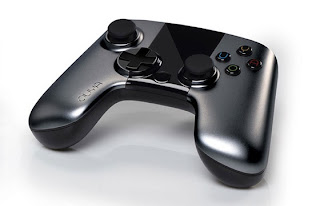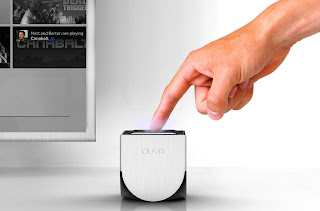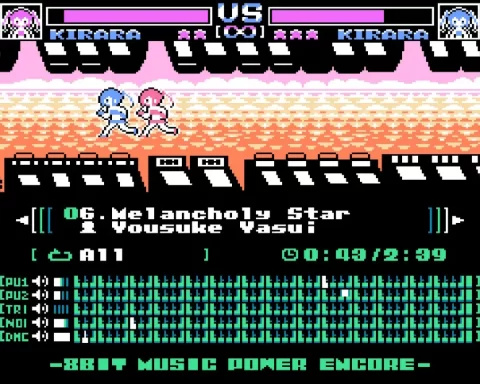When Ouya landed on Kickstarter, the reception throughout the gaming media world was understandably mixed. Why do we need an Android-based console to play the games that we’re already playing on mobile devices? We also heard many journalists’ sentiments that the console would never be competitive with the established digital platforms that are already in existence. But here at Digitally Downloaded, we’ve been gaming away on our Ouyas for a few months now, so let’s take a look at what this little Android box can currently offer, as well as explore the future possibilities that the console potentially holds.
Alpha / Beta
Everything that comes into existence has to have a beginning. In the world of technology – specifically the gaming industry – Research and Development cost can be astronomical, and then getting the console manufactured and placed in the worldwide marketplaces is no easy feat; in fact, some would say (and many did say) that it is all but impossible. Kickstarter proved that there was a demand for a new type of console with Ouya – a Tegra 3, Android-based architecture – by raising $8,596,474 in 30 days. This fully digital design is affordable to manufacture and can be easily placed in consumer’s hands for only $99 USD, and this low install price was a big selling point for early Kickstarter backers.
Once the Kickstarter backers’ Ouya units started rolling out, a few websites’ were quick to get their reviews it. These reviews were premature, to say the very least, as the Ouya team has been upfront that the console was still in its early beta format, and that things would improve over the following months to its official release date of June 25th. Worse, these early reviews were quick to compare the Ouya console to established platforms and upcoming dedicated gaming consoles.
Let’s make this very clear: Ouya is not a direct competitor to the established dedicated gaming platforms: Xbox 360, PlayStation 3, Wii U, nor the upcoming consoles from these companies.
Understanding the market
What is “indie gaming” though? By definition, it’s a video game that is developed by a very small team of developers, without a publisher funding the game’s development. These titles’ have the potential to offer a flurry of creativity not typically seen in mainstream titles and have graced web browsers for the past decade on PC. Over the past few years, these titles have exploded onto dedicated gaming platforms with the emergence of Xbox Live Arcade and followed by the likes of the PlayStation Network and Steam.
Rewind time back five years ago and an ‘indie game’ would be a title that was developed without the funding of a major publisher, just as it is defined. Today, major publishers are quick to fund small independent developers, especially those that utilize Kickstarter as a platform to fund their projects – one of which being Ragtag Studios’ Ray’s the Dead, which has just recently been picked up by Sony for a timed exclusive PlayStation 4 release. This creates a conflict with what makes a video game truly ‘indie’ and in my opinion, has in itself created a confusion within the market in regards to the Ouya.
Team Meat’s Super Meat Boy, Supergiant Games’ Bastion and Playdead’s Limbo are not only some of my favourite games of this current generation, they’re also titles that are widely considered to be ‘indie’, even though they acquired a major publisher prior to their release. These titles’ are all highly polished and immensely fun games, which is typical for titles released under a major publisher. Games that aren’t, can indeed offer extremely high fun-factors, but oftentimes we see that these games can be a bit rough around the edges – one only needs to look at the mobile marketplaces to see what it is I’m referencing.
Why did I bring all of this into this hardware review? Because it is the games that don’t have a publisher that make up the vast majority of what is on offer on the Ouya. Those looking to make a purchase need to understand this upfront. This isn’t to say that large publishers’ games aren’t already available on the console, because with the likes of Final Fantasy III they are, it is just that there are far more focus on the self-published titles on the console and I expect (and hope) it to stay this way going forward.
Hardware
Opening the packaging that contains Ouya will find that this console will take up very little space in your home and its metallic grey and black plastic aesthetics are visually pleasing as well. The console itself is quite small and can be easily grasped in one hand comfortably. The controller is well made, with the top cover being removable to hide the replaceable batteries underneath (batteries included!). The joysticks feel great, as do the face buttons and D-pad. My only gripe is the top shoulder buttons. The smooth plastic makeup of them feels a bit strange and undefined, and a little cheap too. Otherwise, the controller is quite impressive, which is a good thing, seeing how vital it is to this consoles future.
There’s only one button on the Ouya console itself, which turns the power on and off. The Ouya controller does feature a “U” button, but it doesn’t allow for the console to be turned on remotely – controller pairing happens after the console is powered on – the button on the console has to be physically pressed. With the last firmware update, this button can now be pressed twice to immediately exit any game, which alleviates a lot of confusion that took place prior to the update.
The console also has Ethernet, HDMI, USB 2.0 and microUSB ports, and an AC power jack built into the backside of the console. In the box is a small HDMI and AC power cord, both of which are very short. My gaming setup is an enclosed desk format, where I can play video games and work simultaneously with ease. While the short HDMI cord wasn’t an issue in itself, the stiffness of it was. My Ouya console turns sideways from the short cord’s stiffness constantly, and I eventually just swapped it out. Also, I had to use an extension cord to plug my console in, as the power cord provided is only a few feet long. It’s minor gripes, but by the time I got my console powered up, I was a bit frustrated, which isn’t a good thing. This frustration was heightened by the fact that the console and controller are covered in small pieces of protective film, which needs to be removed before playing – it gets everywhere! I know there’s a reason for this, but between the film removal and cord issues, the excitement of receiving my console was no longer felt. This is a stark contrast to, say, the unboxing of an Apple device; these frustrations most certainly altered my initial hours with the console.
While this might seem like nitpicking issues, this is definitely an area where the Ouya team needs to put some focus going forward. Please note here that the final release that is currently on store shelves may differ – this review is based off of a Kickstarter backer unit.
User Interface
The User Interface (UI) that is built into the Ouya had received a lot of flak and much of it was understandable a few months back. The team slowly implemented new additions to the UI, but the final release version, which will continue to improve, will be much like the console: minimalistic and easy to use.
The Play tab allows you to jump right into the games that you already have downloaded onto your console and the Discover tab allows you to see what games are currently getting the most traction. The latter of which is a great addition, because with so many indie titles already available on the console, it can be a bit intimidating as to what you try out first. Speaking of that, one of the best things about the console is that every single game is free to download. Developers are free as to how they approach turning a profit after thee initial download, and for the most part, they are using it to offer a demo of sorts.
The Make tab is where you’ll want to head if you plan to try your hand at developing your own game or side-load unofficial games and apps. Lastly, the Manage tab is where (you probably already guessed) you manage the system settings. On this front, there’s one setting that is sorely missed and that is being able to resize the output of the screen to fit your TV. Instead you’re left to manage the settings on your TV to do this instead, which for me, leaves the very edges of the horizontal side of the screen cut out. It is annoying, to say the least, but it is something that will hopefully be rectified in a future firmware update.
Freedom
Ouya is an open source console that offers both developers and consumers a lot of freedom to do as they please. This has been (and will continue to be) controversial. Just as there are two opposing sides to every controversial debate, the freedom that Ouya presents bring both highs and lows to the console as well.
Where Ouya has found the most criticism, has been it having emulators available in its marketplace. These emulators do not contain any ROMs within them, which is part of Ouya’s guidelines. Regardless, it has caught a lot of hostility for having them available. In case you don’t know, downloading a ROM from the Internet is illegal, seeing how it is a direct offence against the title’s copyrights. The only way to legally play a ROM is either by copying the original cartridge’s files into the emulator, or downloading the ROM through an emulator that has obtained the respective rights to allow you to do so. If you have the legal means to do so though – we do not condone piracy here at DDNet – Ouya allows you to play your old retro titles all in one place thanks to those emulators.
Developers also have freedom to build their games to their liking as well on Ouya, which has its ups and downs as well. Without the Ouya team setting guidelines, some games leave you guessing as to how to even get it started. One thing that we didn’t mention earlier about the controller is that it has a touchpad in the centre of it and some games require you to use it to navigate the game menus, which is almost always unintuitive. Also, some games that are making the jump from mobile platforms to Ouya play great with a controller in hand, but finding these games enlarged on a television screen is not nearly so great, seeing how the visuals take a major hit in being blown up like that.
Developer freedom has its pluses though, because there are a handful of games that are completely free (some feature donation menus, which I personally think is brilliant). These little titles can offer up a world of fun for a short period of time. On such title, No Brakes Valet, has you parking cars in a top down view and as the name suggest, some of the cars don’t have brakes. This little title is a joy to play and it doesn’t cost you a single cent. On the flipside, titles like Dub Wars (read our recent interview here) are using Ouya as a place to beta test, which again, comes as a big win for Ouya owners, as this gives you a good chunk of the game to play absolutely free of charge.
Something different
Whether or not you should invest in Ouya is something that you will have to decide for yourself. The handful of exclusive titles it has available on it at the time of writing are somewhat few and offer varying degrees of value. Many mobile titles like League of Evil and Shadowgun are finally available to play with a controller in hand with the move to Ouya, but Apple’s recent announcement of allowing third party controllers for its mobile devices has the potential to make this feature irrelevant, and should be taken into consideration. Also, many of the titles available on Ouya are available on multiple other platforms as well, especially PC.
Yet, Ouya has the potential to take many of the best indie games from all platforms and bring them all into one place, as well as continually building a stable of exclusive titles of its own along the way. For indie gamers, Ouya should be a no brainer of a purchase with its low install price and that same aspect will hopefully entice those new to the indie market to jump onboard as well.
It is true that the lines of what the makeup of an indie game truly is has become a bit blurred over the past few years, but whether it is self-published or acquired by a major publisher, Ouya has them both on offer. While those that feature a major publisher will undoubtedly gain a great deal of traction on the console, it looks like it will continue to be the creative self-published titles that will continue to garner the limelight here. The future for Ouya looks to be brightly filled with indie games. It is a console that we do have some misgivings about, but if the team can continue to improve on what it has started and keep the river of games flowing, Ouya looks to carve its own path in the industry going forward. And you know what? I hope that it does just that.











